
Madang: The Jewel of Papua New Guinea's North Coast
Discover Madang, a coastal gem in Papua New Guinea, offering stunning coral reefs, lush rainforests, and a rich cultural heritage perfect for adventure and relaxation.
Madang, nestled on the north coast of Papua New Guinea, is a haven for travelers seeking both adventure and tranquility. Known for its lush landscapes, crystal-clear waters, and vibrant marine life, Madang offers an array of experiences that cater to nature lovers and history enthusiasts alike. The town itself is adorned with colonial-era architecture and friendly locals, making it a welcoming destination for tourists. One of the standout features of Madang is its stunning coral reefs, which make it a prime spot for diving and snorkeling. The waters are teeming with colorful fish, sea turtles, and even shipwrecks waiting to be explored. For those who prefer to stay on land, the surrounding rainforests and mountains offer excellent hiking opportunities, complete with breathtaking views and diverse wildlife. Madang is also rich in cultural heritage. A visit to the Madang Museum provides insight into the region's history and traditions, while local markets offer a chance to purchase handmade crafts and taste traditional foods. Annual festivals, such as the Madang Festival, showcase the vibrant cultural tapestry of the area through music, dance, and art. Whether you're exploring underwater wonders, trekking through emerald forests, or immersing yourself in local culture, Madang promises an unforgettable experience. Its unique blend of natural beauty and cultural richness makes it a must-visit destination in Papua New Guinea.
Local tips in Madang
- Visit the Madang Resort for easy access to diving tours and a relaxing stay.
- Explore the Balek Wildlife Sanctuary to see unique local flora and fauna.
- Head to the Madang markets early in the morning for the freshest produce and unique handicrafts.
- Attend the Madang Festival if your visit coincides with it to experience local culture and festivities.
- Rent a bicycle to explore the town and its surroundings at your own pace.
Madang: The Jewel of Papua New Guinea's North Coast
Madang, nestled on the north coast of Papua New Guinea, is a haven for travelers seeking both adventure and tranquility. Known for its lush landscapes, crystal-clear waters, and vibrant marine life, Madang offers an array of experiences that cater to nature lovers and history enthusiasts alike. The town itself is adorned with colonial-era architecture and friendly locals, making it a welcoming destination for tourists. One of the standout features of Madang is its stunning coral reefs, which make it a prime spot for diving and snorkeling. The waters are teeming with colorful fish, sea turtles, and even shipwrecks waiting to be explored. For those who prefer to stay on land, the surrounding rainforests and mountains offer excellent hiking opportunities, complete with breathtaking views and diverse wildlife. Madang is also rich in cultural heritage. A visit to the Madang Museum provides insight into the region's history and traditions, while local markets offer a chance to purchase handmade crafts and taste traditional foods. Annual festivals, such as the Madang Festival, showcase the vibrant cultural tapestry of the area through music, dance, and art. Whether you're exploring underwater wonders, trekking through emerald forests, or immersing yourself in local culture, Madang promises an unforgettable experience. Its unique blend of natural beauty and cultural richness makes it a must-visit destination in Papua New Guinea.
When is the best time to go to Madang?
Iconic landmarks you can’t miss
Madang Resort Hotel
Experience tropical bliss at Madang Resort Hotel, where stunning coastal views meet warm hospitality and a wealth of adventure awaits.

Madang Lodge Hotel
Experience the natural beauty and rich culture of Papua New Guinea at the serene Madang Lodge Hotel, your perfect retreat in Madang Province.

Jais Aben Resort
Experience the serene beauty of Jais Aben Resort, where luxury meets nature in the breathtaking Madang Province of Papua New Guinea.
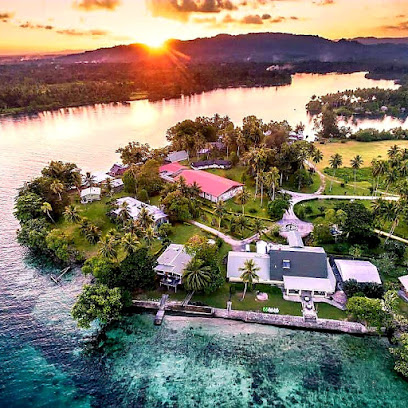
Madang Star International Hotel
Experience tropical luxury at Madang Star International Hotel, where relaxation meets adventure amidst stunning coastal views in Papua New Guinea.

Kalibobo Light House
Discover the stunning Kalibobo Light House in Madang, a historic coastal gem offering breathtaking views and a glimpse into Papua New Guinea's maritime heritage.
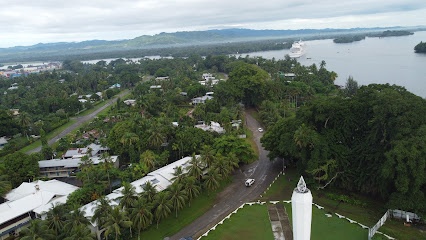
Melanesian Tourist Services
Discover the heart of Papua New Guinea at Melanesian Tourist Services – your gateway to cultural richness and adventure in Madang Province.
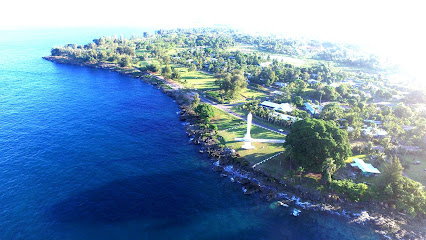
Machine Gun Beach
Discover the serene beauty and rich history of Machine Gun Beach in Madang, where World War II relics meet stunning coastal landscapes.
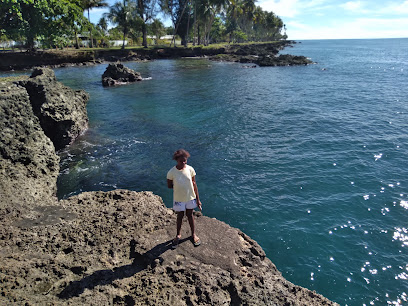
Madang Butchery
Explore the rich flavors of Papua New Guinea at Madang Butchery, where quality meats and local traditions come together to create an unforgettable experience.
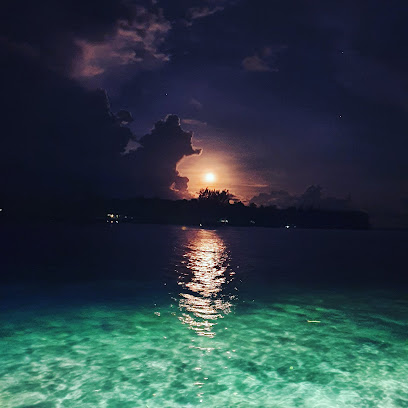
Smugglers Inn Resort
Discover the charm of Smugglers Inn Resort in Madang: your gateway to adventure, relaxation, and the stunning beauty of Papua New Guinea's coast.
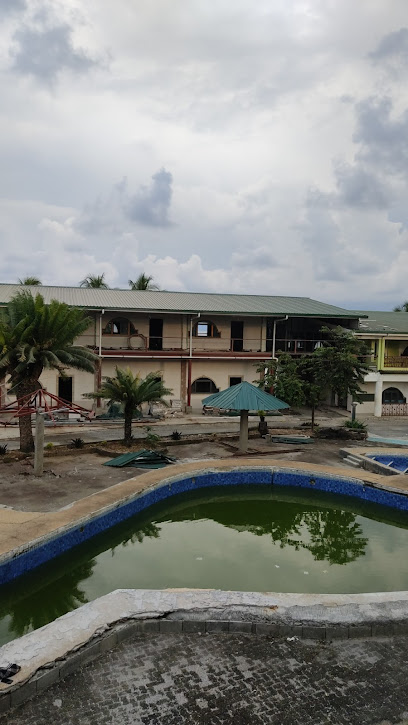
Madang Visitors & Cultural Bureau
Uncover the rich culture and history of Madang at the Madang Visitors & Cultural Bureau, your essential guide to exploring Papua New Guinea's hidden gems.
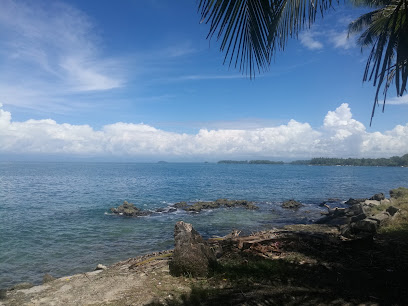
Krangket Island Lodge
Experience the serene beauty of Krangket Island Lodge in Madang Province, where stunning ocean views and vibrant culture await.
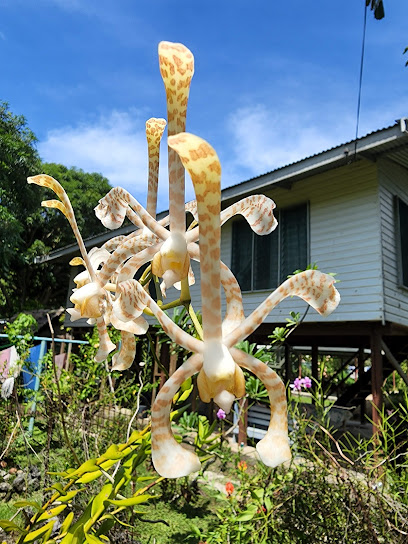
Kranget Island
Explore the pristine beauty and rich culture of Kranget Island in Madang Province, a tropical paradise for adventure and relaxation.
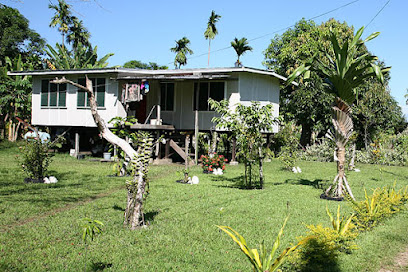
Niugini Dive Adventures
Discover the vibrant underwater ecosystems of Papua New Guinea at Niugini Dive Adventures in the heart of Madang Province.
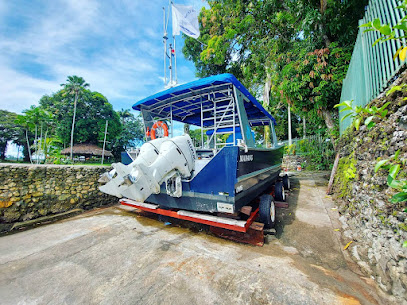
Ambaul Chaigem Agriculture cooperative
Experience sustainable agriculture and community spirit at the Ambaul Chaigem Agriculture Cooperative in beautiful Madang Province.
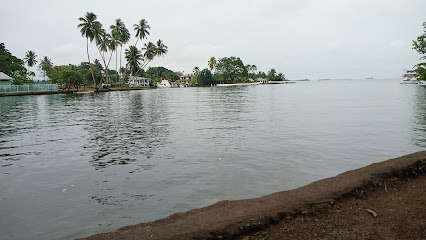
PLP Park
Experience the natural beauty and tranquility of PLP Park in Madang Province, a serene oasis perfect for relaxation and wildlife encounters.

Unmissable attractions to see
Kalibobo Light House
Experience the stunning views and rich history at Kalibobo Lighthouse, a must-visit tourist attraction in Madang, Papua New Guinea.
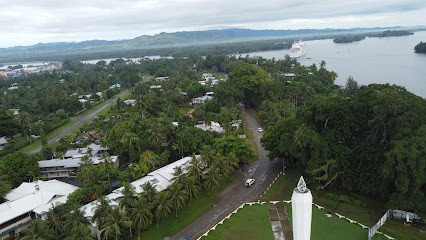
Machine Gun Beach
Experience history and natural beauty at Machine Gun Beach, a serene escape in Papua New Guinea's Madang Province.
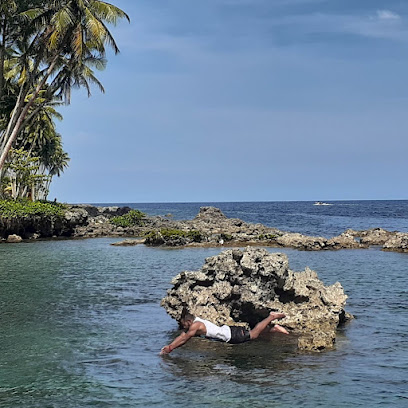
Madang Visitors & Cultural Bureau
Explore the rich culture and history of Madang at the Madang Visitors & Cultural Bureau, your essential guide to this beautiful region.
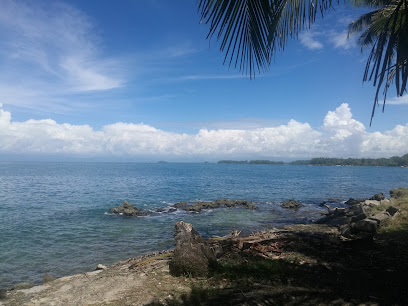
Balek Smell Water
Explore Balek Smell Water in Madang Province, a tranquil nature preserve with stunning landscapes, diverse wildlife, and cultural heritage.
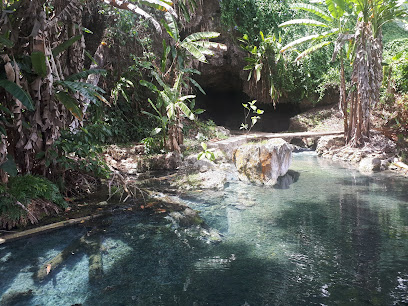
PLP Park
Discover the tranquil beauty of PLP Park, a lush paradise in Madang Province, perfect for relaxation and nature exploration.

Sugeng Aben
Discover the serene beauty of Sugeng Aben Park in Madang Province, a perfect escape for nature lovers and travelers seeking tranquility.
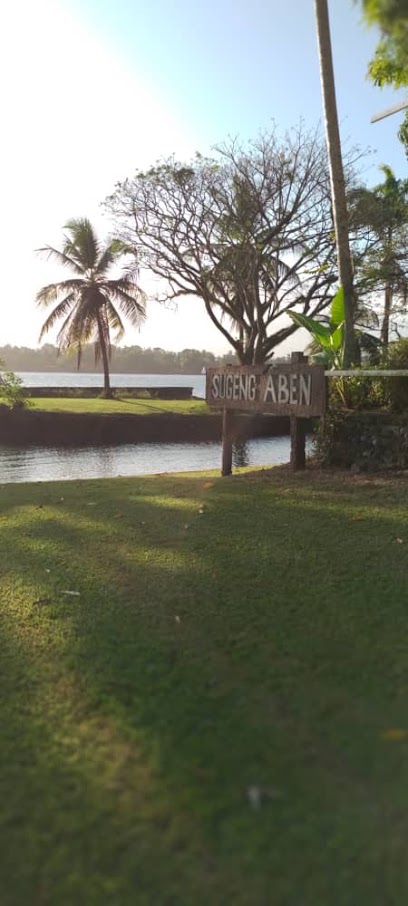
LarryButterflyconservation reserve
Explore Larry Butterfly Conservation Reserve in Madang Province, a haven for butterfly lovers and nature enthusiasts, showcasing stunning biodiversity.
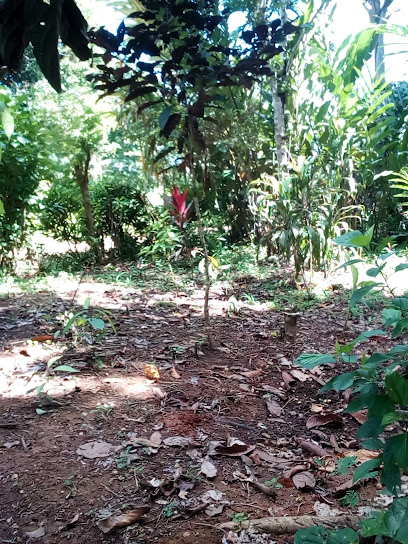
Kaviaini Neza Denge Tourism services
Explore the stunning natural beauty and rich cultural experiences at Kaviaini Neza Denge Tourism Services in Usino Bundi, Madang Province, Papua New Guinea.
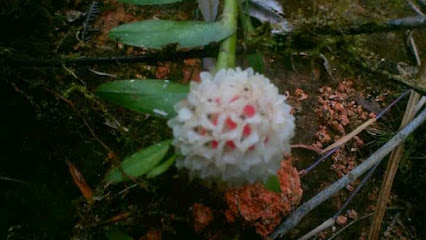
Hululan Plantation
Explore the lush beauty and serene landscapes of Hululan Plantation in Madang Province, a true paradise for nature lovers and cultural enthusiasts.
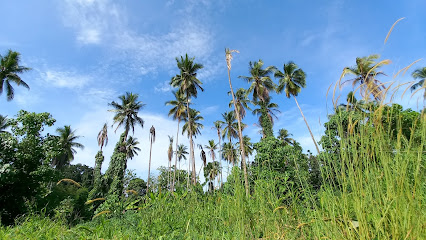
Jones Wal
Explore the breathtaking landscapes of Jones Wal in Madang Province, a hiking paradise offering stunning views and rich biodiversity.

Essential places to dine
Madang Resort Hotel
Experience unparalleled beauty and comfort at Madang Resort Hotel – your gateway to adventure in Papua New Guinea.

Madang Lodge Hotel
Experience unparalleled comfort at Madang Lodge Hotel amidst breathtaking landscapes in Papua New Guinea's stunning Madang Province.

Jais Aben Resort
Discover serene luxury at Jais Aben Resort in Madang Province—where stunning ocean views meet exquisite Pacific Rim dining.
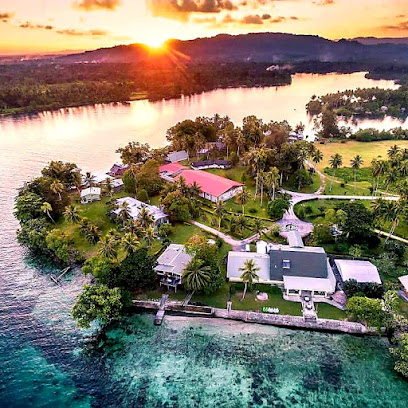
Madang Star International Hotel
Discover unparalleled comfort and warm hospitality at Madang Star International Hotel in beautiful Papua New Guinea.

Nambis Inn Madang
Experience tropical bliss at Nambis Inn Madang, your gateway to adventure in Papua New Guinea's stunning landscapes.

Kalibobo Village Hotel waterfront Bungalows
Discover paradise at Kalibobo Village Hotel with waterfront bungalows offering comfort, local cuisine, and stunning views in Madang.
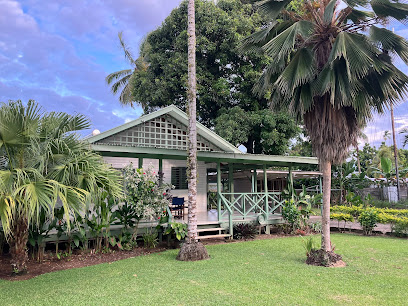
Brian Bell Home Centre - Madang
Explore diverse home goods at Brian Bell Home Centre - Madang, where local craftsmanship meets modern living essentials.

Madang Club
Discover Madang Club: A hub for nightlife enthusiasts in Papua New Guinea offering drinks, music, and vibrant social interactions.
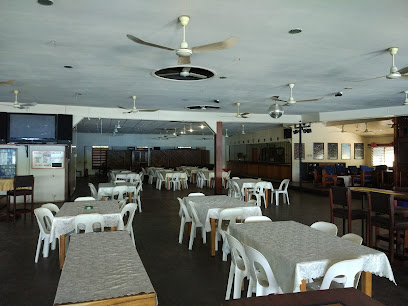
The Anchor
Experience authentic Papua New Guinean cuisine at The Anchor in Madang – where fresh seafood meets stunning coastal views.
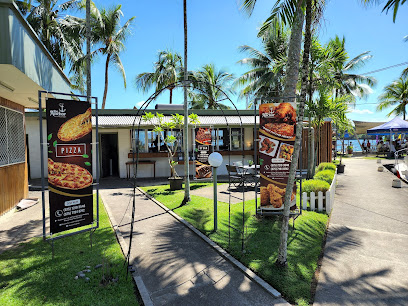
Jais Aben Bridge Bar
Discover the vibrant ambiance and stunning views at Jais Aben Bridge Bar in Madang – your perfect retreat on the North Coast.
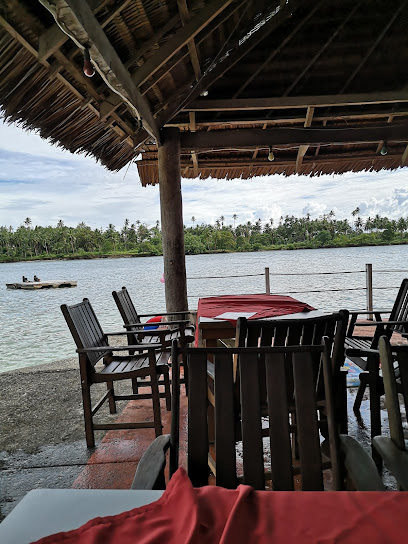
Comfort Inn Hotel
Experience comfort and hospitality at Comfort Inn Hotel in Madang - your gateway to Papua New Guinea's stunning landscapes and rich culture.

Eden Restaurant
Discover the flavors of Papua New Guinea at Eden Restaurant in Madang – where fresh ingredients meet breathtaking views.
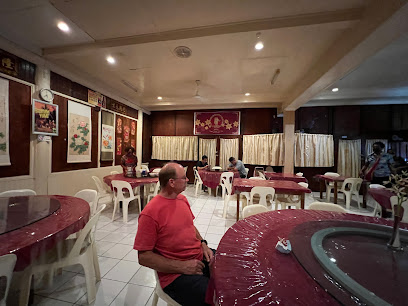
BNBM MADANG BRANCH
Discover unique home goods at BNBM Madang Branch, where local culture meets quality craftsmanship in beautiful Papua New Guinea.
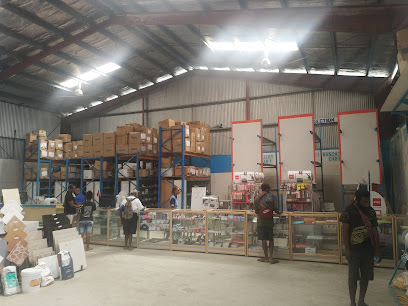
Diwai Restaurant Catering Service
Experience authentic Papua New Guinean cuisine at Diwai Restaurant Catering Service in Madang – where tradition meets flavor.
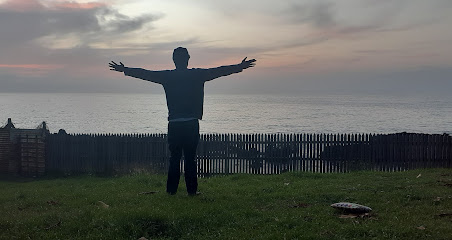
Ela Emporium
Discover the vibrant retail scene at Ela Emporium in Madang—where local crafts meet modern shopping experiences.
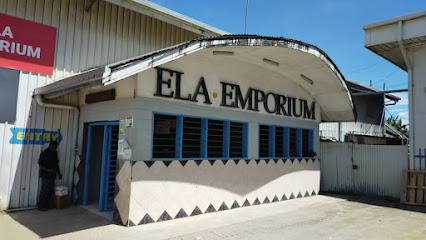
Markets, malls and hidden boutiques
Brian Bell Home Centre - Madang
Explore the vibrant Brian Bell Home Centre in Madang for unique home goods and local culture, a must-visit for any tourist!
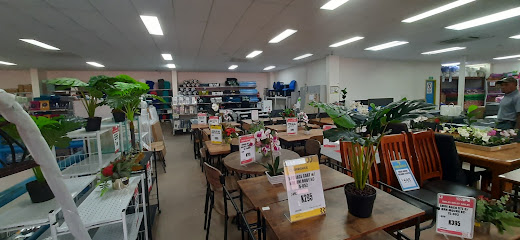
Newtown Plaza
Experience vibrant shopping and local culture at Newtown Plaza in Madang, Papua New Guinea, a perfect destination for tourists.
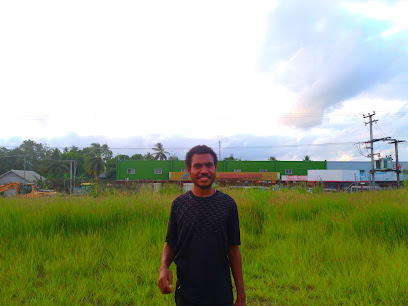
BMK Shopping Mall
Discover the vibrant shopping scene at BMK Shopping Mall in Madang, offering an array of local and international brands, dining, and entertainment.
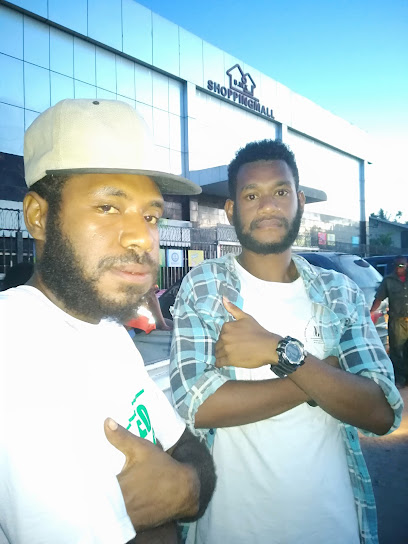
Brian Bell Warehouse Madang
Explore Brian Bell Warehouse in Madang for a unique shopping experience with a diverse selection of local crafts, household items, and more.
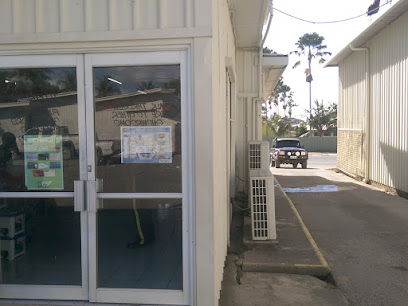
DIWAI MART
Explore DIWAI MART in Madang Province for authentic local crafts, fresh produce, and a taste of Papua New Guinea's vibrant culture.
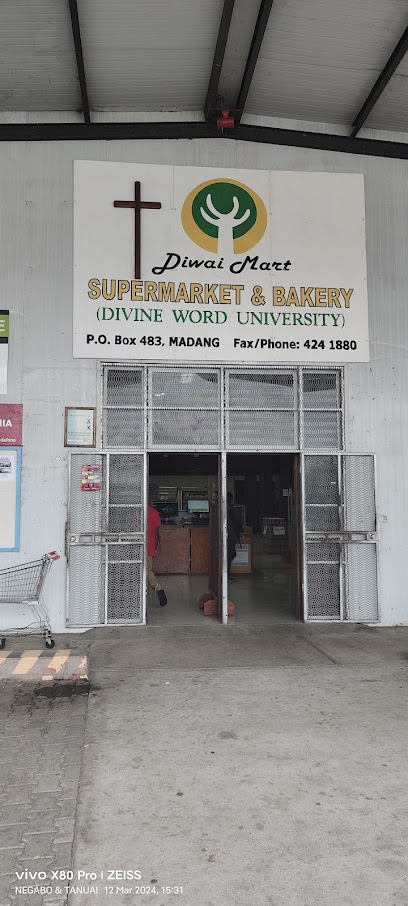
J&Z Cash & Carry
Explore J&Z Cash & Carry in Madang - Your ultimate shopping destination for local goods and cultural experiences in Papua New Guinea.
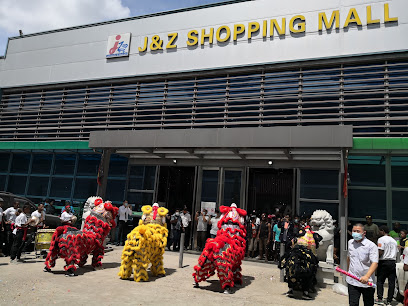
BNBM MADANG BRANCH
Explore BNBM Madang Branch for unique home goods and local crafts that capture the essence of Papua New Guinea's culture.
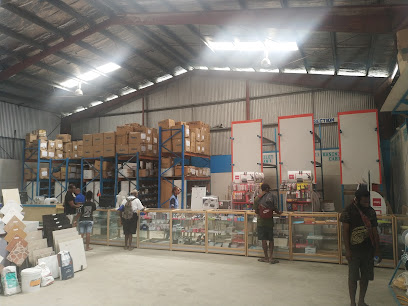
Ela Emporium
Explore Ela Emporium in Madang for a unique shopping experience blending local culture with modern retail offerings.
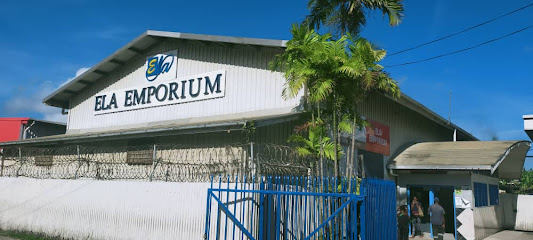
Ela Hardware & Stationery
Explore Ela Hardware & Stationery in Madang for essential home goods and local souvenirs that reflect the vibrant culture of Papua New Guinea.
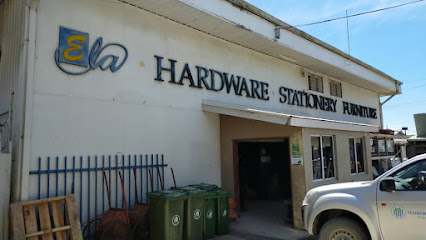
Madang Town
Explore Madang Town: A vibrant shopping hub rich in culture, local crafts, and stunning coastal views in Papua New Guinea.

Happy Mart
Experience local flavors and culture at Happy Mart in Madang, your go-to grocery store for fresh produce and unique souvenirs.
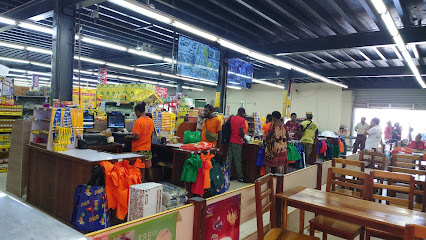
Ela Plaza
Ela Plaza: Your ultimate shopping destination in Madang, blending local charm with international brands for a vibrant retail experience.
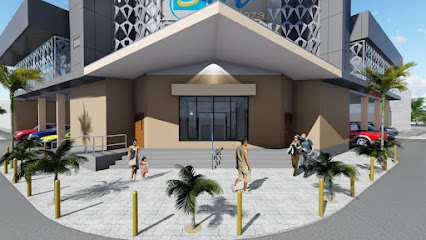
Furama
Experience the vibrant shopping scene at Furama in Madang, where local flavors and essentials come together in a delightful supermarket setting.

Redscar Supermarket
Discover the flavors of Madang at Redscar Supermarket, your gateway to local produce and culinary treasures in Papua New Guinea.

Fortune Supermarket
Discover local flavors and international favorites at Fortune Supermarket in Madang – your one-stop shop for culinary delights.

Essential bars & hidden hideouts
Madang Resort Hotel
Discover the magic of Madang Resort Hotel, where stunning views and adventure await in Papua New Guinea's tropical paradise.

Madang Lodge Hotel
Discover the beauty of Papua New Guinea at Madang Lodge Hotel, where luxury meets adventure amidst stunning landscapes.

Madang Star International Hotel
Experience unparalleled comfort and breathtaking views at Madang Star International Hotel, your perfect retreat in Papua New Guinea.

Kalibobo Village Hotel waterfront Bungalows
Discover relaxation and adventure at Kalibobo Village Hotel, a stunning waterfront retreat in Madang Province, Papua New Guinea.
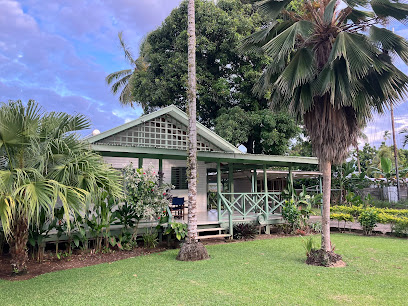
Madang Club
Discover the vibrant nightlife of Madang Club, a cultural gem in Papua New Guinea, where entertainment and local charm come together.
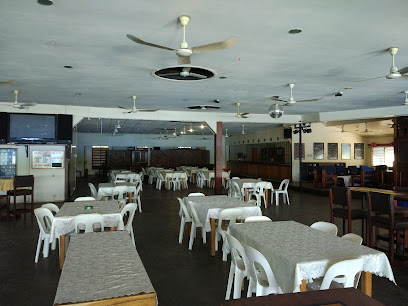
The Anchor
Experience the best of local and international cuisine at The Anchor, a dining gem in Madang Province, Papua New Guinea.
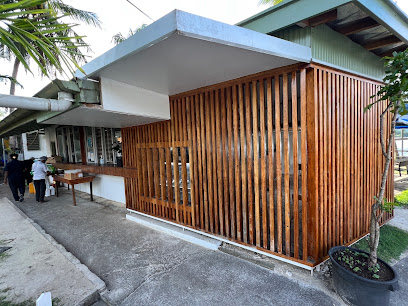
Jais Aben Bridge Bar
Discover the vibrant Jais Aben Bridge Bar in Madang, offering exquisite drinks and stunning coastal views for an unforgettable experience.
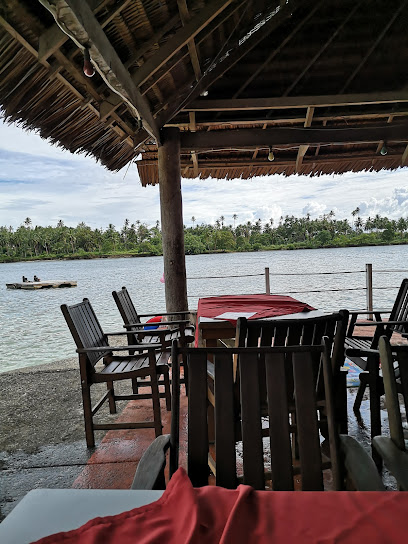
Madang Country Club
Discover leisure and excitement at Madang Country Club, the premier sports destination in Madang Province with stunning views and diverse activities.
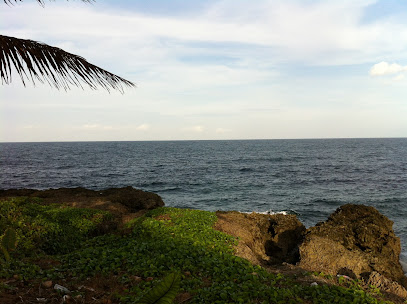
Comfort Inn Hotel
Discover comfort and convenience at Comfort Inn Hotel in Madang, where relaxation meets adventure amidst stunning natural beauty.

Smugglers Inn Resort
Discover the tranquil beauty and adventure of Papua New Guinea at Smugglers Inn Resort, your perfect getaway in Madang Province.
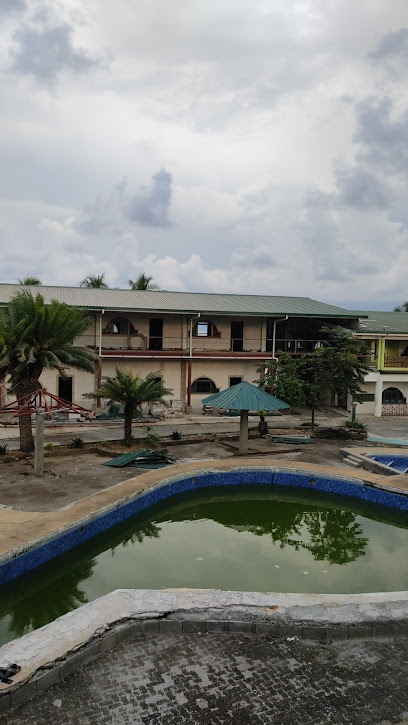
Eden Restaurant
Discover the flavors of Papua New Guinea at Eden Restaurant, a culinary oasis in Madang offering fresh, local dishes in a charming setting.
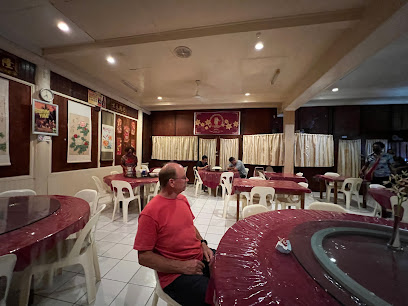
Diwai Restaurant Catering Service
Discover authentic Papua New Guinean cuisine at Diwai Restaurant in Madang, where flavor meets hospitality in a charming setting.

Madfox Grill
Discover Madfox Grill in Madang Province, where every bite of gourmet hamburgers is a journey through exceptional flavors.
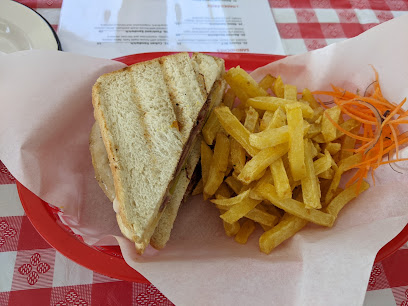
ALMA RETAILING AND WHOLESALE
Experience the vibrant ambiance of ALMA Retailing and Wholesale, a premier beer garden in Madang offering local brews, delicious food, and unforgettable moments.

Flying fox tree
Discover the enchanting Flying Fox Tree Bar in Madang, a perfect spot for relaxation amidst stunning tropical views and vibrant local culture.

Local Phrases
-
- HelloOllo
[oh-loh] - GoodbyeGudbai
[good-bye] - YesYes
[yes] - NoNogat
[no-gat] - Please/You're welcomePlis
[plees] - Thank youTangkyu
[tang-kyoo] - Excuse me/SorrySori
[sor-ee] - How are you?Yu stap gut?
[yoo stap goot] - Fine. And you?Gut. Na yu?
[goot. nah yoo] - Do you speak English?Yu save toktok long Inglish?
[yoo sah-veh tohk-tohk long in-glish] - I don't understandMi no save long tok
[mee no sah-veh long tohk]
- HelloOllo
-
- I'd like to see the menu, pleaseMi laik lukim menu, plis
[mee laik loo-keem meh-noo, plees] - I don't eat meatMi no kaik kapul
[mee no kai-kahp-pool] - Cheers!Chea!
[chee-ah] - I would like to pay, pleaseMi laik baim, plis
[mee laik bah-eem, plees]
- I'd like to see the menu, pleaseMi laik lukim menu, plis
-
- Help!Help!
[help] - Go away!Go pinis!
[go pee-nees] - Call the Police!Kolim Polis!
[koh-leem poh-lees] - Call a doctor!Kolim dokta!
[koh-leem dok-tah] - I'm lostMi lusim rot
[mee loo-seem roht] - I'm illMi sik
[mee seek]
- Help!Help!
-
- I'd like to buy...Mi laik baim...
[mee laik bah-eem] - I'm just lookingMi tasol lukim
[mee tah-sol loo-keem] - How much is it?Em i stap long hamas?
[em ee stap long hah-mahs] - That's too expensiveEm i moa cost
[em ee moh-ah cost] - Can you lower the price?Yu inap loaem prais?
[yoo ee-nahp loh-ahm prah-ees]
- I'd like to buy...Mi laik baim...
-
- What time is it?Em i kol wanemtaim?
[em ee kohl wah-nehm-tah-eem] - It's one o'clockEm i wan o'klak
[em ee wahn oh-klaak] - Half past (10)Hap pasim (10)
[hahp pah-seem] - MorningMonin
[moh-neen] - AfternoonApinun
[ah-pee-noon] - EveningEvening
[ee-veh-neeng] - YesterdayDeste
[des-teh] - TodayTude
[too-deh] - TomorrowTomoro
[toh-moh-roh] - 1Wan
[wahn] - 2Tu
[too] - 3Tri
[tree] - 4Fo
[foh] - 5Faiv
[fah-eve] - 6Sikis
[see-kees] - 7Seven
[seh-vehn] - 8Eit
[ayt] - 9Nain
[nayn] - 10Ten
[tehn]
- What time is it?Em i kol wanemtaim?
-
- Where's a/the...?Em i stap wea...?
[em ee stap weh-ah] - What's the address?Em i stap long adres?
[em ee stap long ad-rehs] - Can you show me (on the map)?Yu inap soim mi (long map)?
[yoo ee-nahp soh-eem mee long mahp] - When's the next (bus)?Wanemtaim bai kamap nambawan (bas)?
[wah-nehm-tah-eem bah-ee kah-mahp nahm-bah-wahn bass] - A ticket (to ....)Wan tiket (long ....)
[wahn tee-keht long]
- Where's a/the...?Em i stap wea...?
History of Madang
-
Madang, located on the northern coast of Papua New Guinea, has been inhabited for thousands of years by indigenous groups such as the Bel people. These early settlers lived in harmony with the rich natural environment, relying on fishing, agriculture, and trade. Traditional customs, dances, and rituals remain an integral part of the local culture, reflecting the deep-rooted heritage of the indigenous communities.
-
The first European contact with Madang occurred in the 19th century when German explorers and traders arrived. In 1884, Germany established a protectorate over the northern part of Papua New Guinea, including Madang. The town was initially named 'Friedrich-Wilhelmshafen' in honor of Emperor Wilhelm I. German colonial rule brought significant changes, including the introduction of new agricultural practices and the establishment of plantations.
-
During World War II, Madang became a strategic location due to its coastal position. In 1942, Japanese forces occupied the town, transforming it into a critical base for their military operations. The area witnessed fierce battles between Japanese and Allied forces. The remnants of wartime infrastructure, such as bunkers and airstrips, can still be found, serving as silent witnesses to this tumultuous period.
-
After World War II, Madang was placed under Australian administration as part of the United Nations Trust Territory. The post-war period saw significant reconstruction efforts, including the development of infrastructure and public services. Madang emerged as an important commercial and administrative center, attracting people from various parts of Papua New Guinea and fostering a diverse and vibrant community.
-
Papua New Guinea gained independence from Australia on September 16, 1975. Since then, Madang has continued to develop economically and culturally. The town has become a hub for tourism, drawing visitors with its stunning natural beauty, including pristine beaches, coral reefs, and lush rainforests. Madang's rich history and cultural heritage are showcased through its museums, traditional festivals, and local crafts.
Madang Essentials
-
Madang is accessible by air through Madang Airport (MAG), which has regular flights from Port Moresby, the capital of Papua New Guinea. Airlines such as Air Niugini and PNG Air operate these routes. Alternatively, you can take a ferry from Lae, which is an adventurous way to see the coastline, though it can be less reliable due to weather conditions.
-
Within Madang, local transportation options include PMVs (Public Motor Vehicles), taxis, and rental cars. PMVs are a popular and inexpensive way to get around, though they can be crowded and less reliable. Taxis are available but always agree on a fare before starting your journey. Renting a car gives you more flexibility to explore the surrounding areas at your own pace.
-
The official currency in Papua New Guinea is the Papua New Guinean Kina (PGK). Credit cards are accepted in most hotels and larger restaurants, but it's advisable to carry cash for smaller establishments and local markets. ATMs are available in Madang, but it's prudent to withdraw sufficient funds in Port Moresby or Lae to avoid any inconvenience.
-
While Madang is generally a safe destination, it's important to remain vigilant. Avoid walking alone at night, especially in less populated areas. Areas with higher crime rates include the settlements around the outskirts of the town. Always keep an eye on your belongings in crowded places. It's advisable to consult local authorities or your accommodation for updated safety information.
-
In case of emergency, dial 111 for police, fire, or medical assistance. The local hospital is Madang General Hospital, which can handle most medical emergencies. It's highly recommended to have travel insurance that covers medical emergencies. For minor health issues, there are several pharmacies in town where you can purchase over-the-counter medications.
-
Fashion: Do dress modestly, especially when visiting villages and cultural sites. Avoid wearing revealing clothing. Religion: Do respect local customs and traditions. Always ask for permission before taking photos, especially of people and religious sites. Public Transport: Do be respectful and patient when using PMVs. Don’t expect strict schedules. Greetings: Do greet locals with a handshake or a friendly 'Good day'. Eating & Drinking: Do try local foods and accept hospitality. Don't refuse food or drink as it may be considered impolite.
-
To experience Madang like a local, visit the local markets where you can buy fresh produce and handmade crafts. Engage with locals, who are often very friendly and eager to share their culture and stories. Don't miss out on visiting nearby islands for snorkeling and diving, as Madang is renowned for its underwater beauty. Also, consider taking a walk along the Madang Coastline Walkway for stunning views and a chance to interact with local fishermen and villagers.
Trending Landmark in Madang
-
Madang Resort Hotel
-
Madang Lodge Hotel
-
Jais Aben Resort
-
Madang Star International Hotel
-
Kalibobo Light House
-
Melanesian Tourist Services
-
Machine Gun Beach
-
Madang Butchery
-
Smugglers Inn Resort
-
Madang Visitors & Cultural Bureau
-
Krangket Island Lodge
-
Kranget Island
-
Niugini Dive Adventures
-
Ambaul Chaigem Agriculture cooperative
-
PLP Park
Nearby Cities to Madang
-
Things To Do in Goroka
-
Things To Do in Mount Hagen
-
Things To Do in Lae
-
Things To Do in Buka
-
Things To Do in Wewak
-
Things To Do in Kimbe
-
Things To Do in Port Moresby
-
Things To Do in Vanimo
-
Things To Do in Kavieng
-
Things To Do in Rabaul
-
Things To Do in Kokopo
-
Things To Do in Alotau
-
Things To Do in Arawa
-
Things To Do in Taro Island
-
Things To Do in Port Douglas







